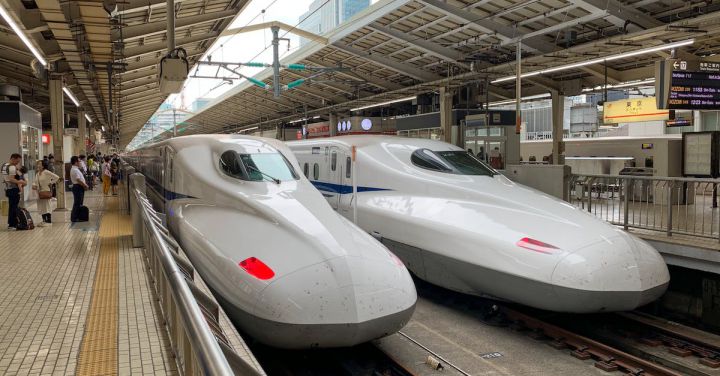Japan is known for its technological advancements and innovative solutions. One of the most iconic symbols of Japan’s technological prowess is the Shinkansen, also known as the bullet train. This high-speed rail network has revolutionized transportation in the country and has become a symbol of Japan’s modernity and efficiency.
The Shinkansen made its debut in 1964, just in time for the Tokyo Olympics. It was the world’s first high-speed train and quickly became a sensation. With its sleek design and cutting-edge technology, the bullet train captured the imagination of people around the world. It was a symbol of Japan’s post-war recovery and its commitment to progress.
The success of the Shinkansen can be attributed to several key factors. First and foremost is its speed. The bullet train can reach speeds of up to 320 kilometers per hour, allowing passengers to travel long distances in a fraction of the time it would take by car or conventional train. This has made the Shinkansen the preferred mode of transportation for both business travelers and tourists.
Another factor that sets the Shinkansen apart is its punctuality. The bullet train has an impressive track record of being on time, with an average delay of less than one minute. This level of reliability has earned the Shinkansen a reputation for efficiency and professionalism. Passengers can trust that their journey will be smooth and hassle-free, allowing them to focus on their work or enjoy the scenery.
In addition to speed and punctuality, the Shinkansen is also known for its comfort and amenities. The train cars are spacious and well-designed, with comfortable seats and ample legroom. Passengers can also enjoy amenities such as Wi-Fi, power outlets, and even onboard dining options. The Shinkansen experience is not just about getting from point A to point B; it is a comfortable and enjoyable journey in itself.
The success of the Shinkansen has not only transformed transportation within Japan but has also had a significant impact on the country’s economy. The bullet train has facilitated the growth of cities outside of Tokyo by making them easily accessible. This has led to the development of new business districts and increased economic opportunities in these regions. The Shinkansen has also boosted tourism, as travelers from around the world flock to Japan to experience the thrill of riding on the iconic bullet train.
The success of the Shinkansen has not gone unnoticed by other countries. Many nations have looked to Japan as a model for their own high-speed rail systems. The bullet train’s efficiency, speed, and reliability have become benchmarks for other countries to aspire to. As a result, high-speed rail networks have been developed in countries such as China, France, and Spain, among others.
In conclusion, the Shinkansen has revolutionized transportation in Japan and has become a symbol of the country’s technological prowess. Its speed, punctuality, comfort, and economic impact have made it a success story that other nations strive to emulate. The bullet train has not only transformed the way people travel within Japan but has also influenced the development of high-speed rail networks worldwide. The Shinkansen is a testament to Japan’s commitment to innovation and its ability to create solutions that improve the lives of its citizens and inspire others around the world.
